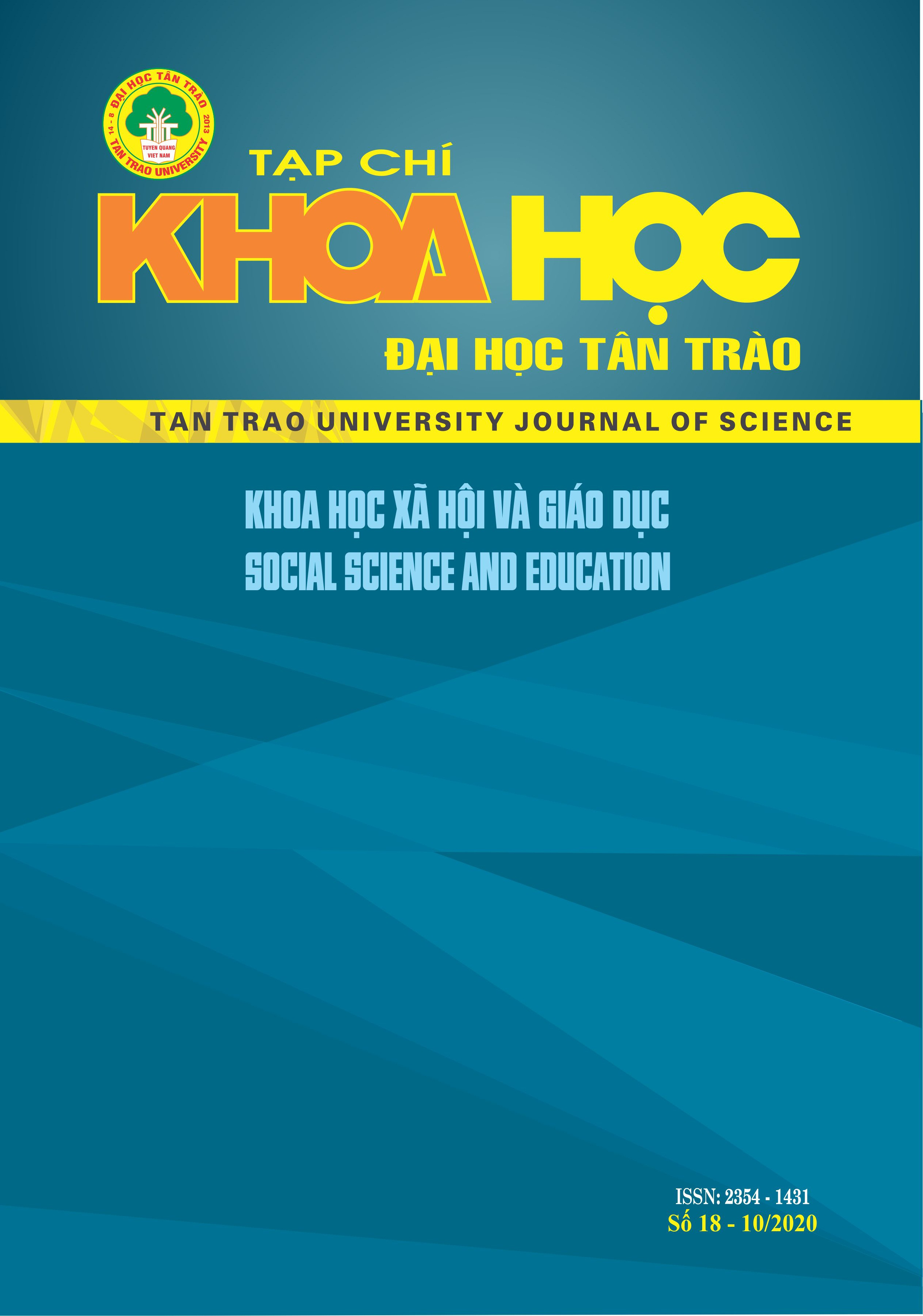APPLICATION OF THE REVERSED CLASS MODEL IN FOREIGN LANGUAGE TEACHING. RESEARCH ON LEGAL ENGLISH LANGUAGE TEACHING AT HA NOI UNIVERSITY OF LAW
DOI:
https://doi.org/10.51453/2354-1431/2020/413Keywords:
reversed classroom, experimental class, traditional group, legal EnglishAbstract
Reversed classroom is considered one of the most innovative pedagogical models which meet the need of teachers and learners in the age of Industry 4.0 now. This study employed quasi-experiment on 60 students studying legal English subject, and they were divided into observation groups and experimental groups. The results showed that the experimental group had a better learning outcome over the traditional class. On that basis, it is proposed to apply the reversed classroom model in teaching and learning legal English at Hanoi University of Law.
Downloads
References
1. Bergmann, J., & Sams, A. (2012). Flipping for mastery. Educational Leadership, 71(4), 24-29. http://www.ascd.org/publications/educational-leadership/dec13/vol71/num04/Flipping-for-Mastery.aspx
2. Bishop, J. L., & Verleger, M. A. (2013). The Flipped Classroom: A Survey of the Research. 120th ASEE Annual Conference & Exposition. Atlanta: GA. 30, 1-18.
Mull B. (2012). Flipped learning: A response to five common criticisms. https://novemberlearning.com/wp-content/uploads/2012/10/flipped-learning-a-response-to-five-common-criticisms.pdf
4. Milman, N. (2012). The flipped classroom strategy: what is it and how can it be used? Distance Learning, 9(3), 85-87. https://go.gale.com/ps/anonymous?id=GALE%7CA305660562&sid=googleScholar&v=2.1&it=r&linkaccess=abs&issn=15474712&p=AONE&sw=w
5. Toto, R., & Nguyen, H. (2009). Flipping the work design in an industrial engineering course. ASEE/IEEE Frontiers in Education Conference. San Antonio, TX
6. Fulton, K. (2012). Upside down and inside out: Flip your classroom to improve student learning. Learning & Leading with Technology, 39(8), 12–17. Retrieve from https://eric.ed.gov/?id=EJ982840
7. Goodwin, B. & Miller, K. (2013). Evidence on Flipped Classrooms Is Still Coming In. Educational Leadership, 70(6), 78-80. Retrieved from http://www.ascd.org/publications/educational-leadership/mar13/vol70/num06/Evidence-on-Flipped-Classrooms-Is-Still-Coming-In.aspx.
8. Bergmann, J. & Waddell, D. (2012). To flip or not to flip? Learning and Leading with Technology, 39(8), 6-7.
9. Kellinger, J. J. (2012). The flipside: Concerns about the “New literacies” paths educators might take. The Educational Forum, 76(4), 524-536. https://doi.org/10.1080/00131725.2012.708102
10. Herreid, F. C. & Schiller, A. N. (2013). Case Studies and the Flipped Classroom. Journal of College Science Teaching, 42(5), 62-66. https://www.aacu.org/sites/default/files/files/PKAL_regional/CRWG-SPEE-REF-01.pdf
11. Springen, K. (2013). Flipping the Classroom: A revolutionary approach to learning presents some pros and cons. School Library Journal, 59(4)23. https://www.slj.com/?detailStory=flipping-the-classroom-a-revolutionary-approach-to-learning-presents-some-pros-and-cons
12. Kordyban, R., & Kinash, S. (2013). No more flying on auto pilot: The flipped classroom. Education Technology Solutions, 56, 54-56. https://pure.bond.edu.au/ws/portalfiles/portal/27949682/No_more_flying_on_autopilot_The_flipped_classroom.pdf
13. Lafee, S. (2013). Flipped learning. The Education Digest, 13-18. https://espforuniversityprep.weebly.com/uploads/2/8/8/6/28861675/flipped_learning_lafree_2013.pdf
Downloads
Published
How to Cite
Issue
Section
License

This work is licensed under a Creative Commons Attribution-ShareAlike 4.0 International License.
All articles published in SJTTU are licensed under a Creative Commons Attribution-ShareAlike 4.0 International (CC BY-SA) license. This means anyone is free to copy, transform, or redistribute articles for any lawful purpose in any medium, provided they give appropriate attribution to the original author(s) and SJTTU, link to the license, indicate if changes were made, and redistribute any derivative work under the same license.
Copyright on articles is retained by the respective author(s), without restrictions. A non-exclusive license is granted to SJTTU to publish the article and identify itself as its original publisher, along with the commercial right to include the article in a hardcopy issue for sale to libraries and individuals.
Although the conditions of the CC BY-SA license don't apply to authors (as the copyright holder of your article, you have no restrictions on your rights), by submitting to SJTTU, authors recognize the rights of readers, and must grant any third party the right to use their article to the extent provided by the license.


